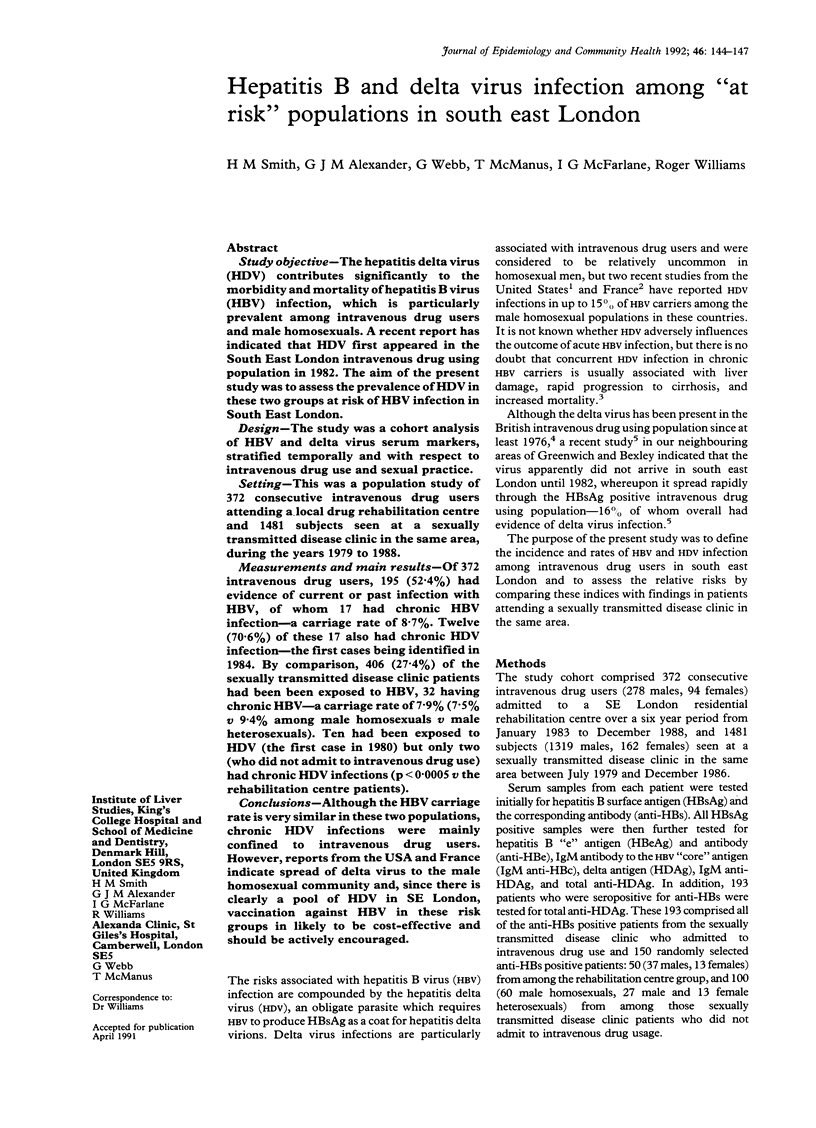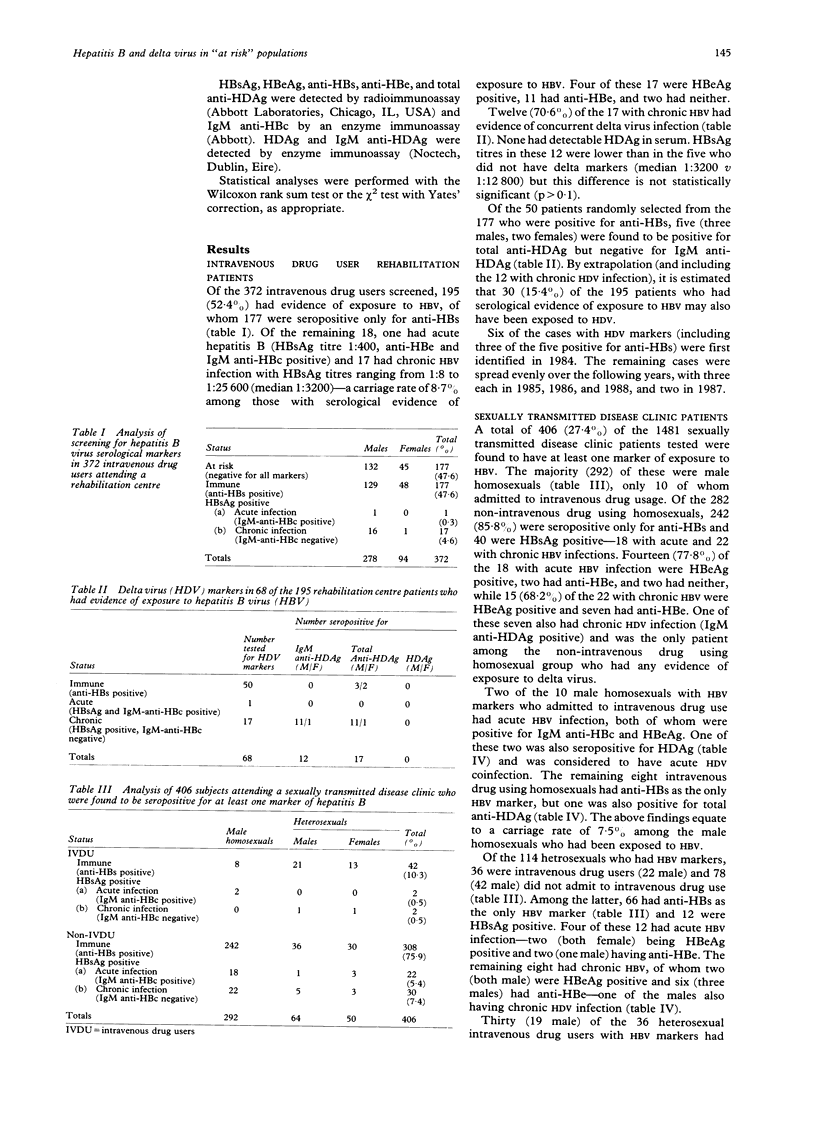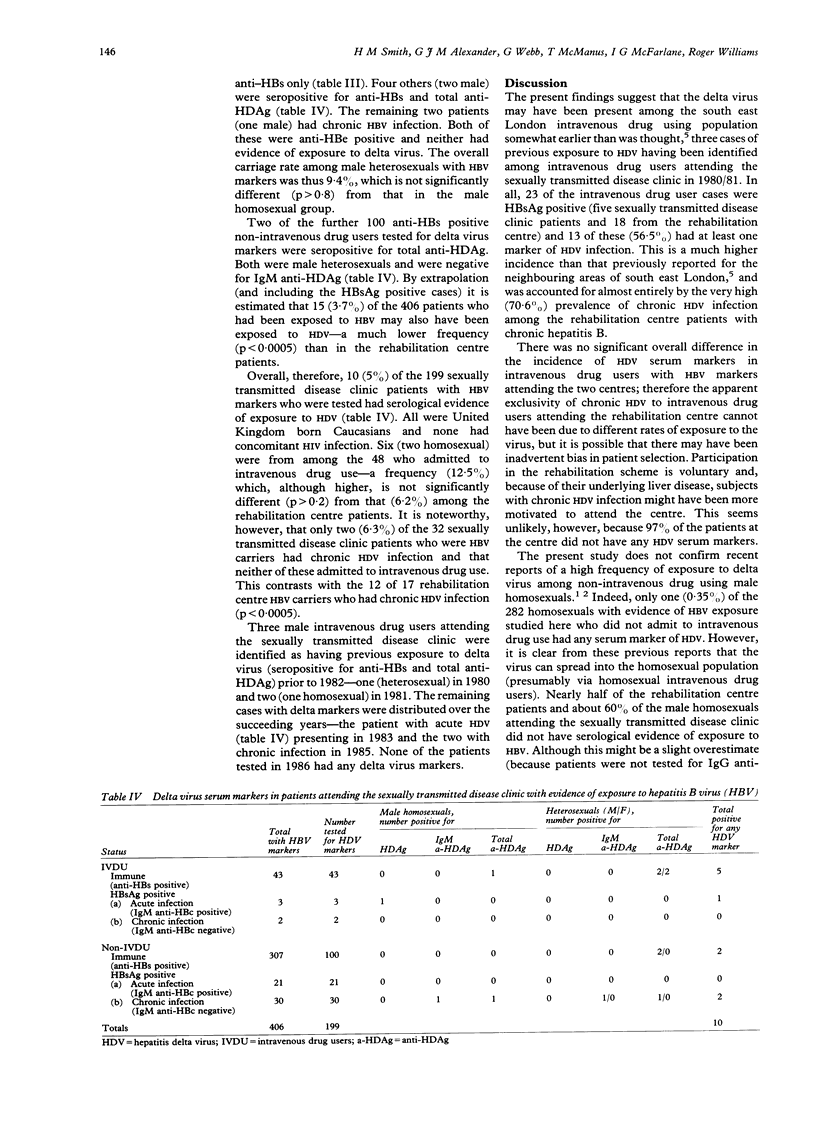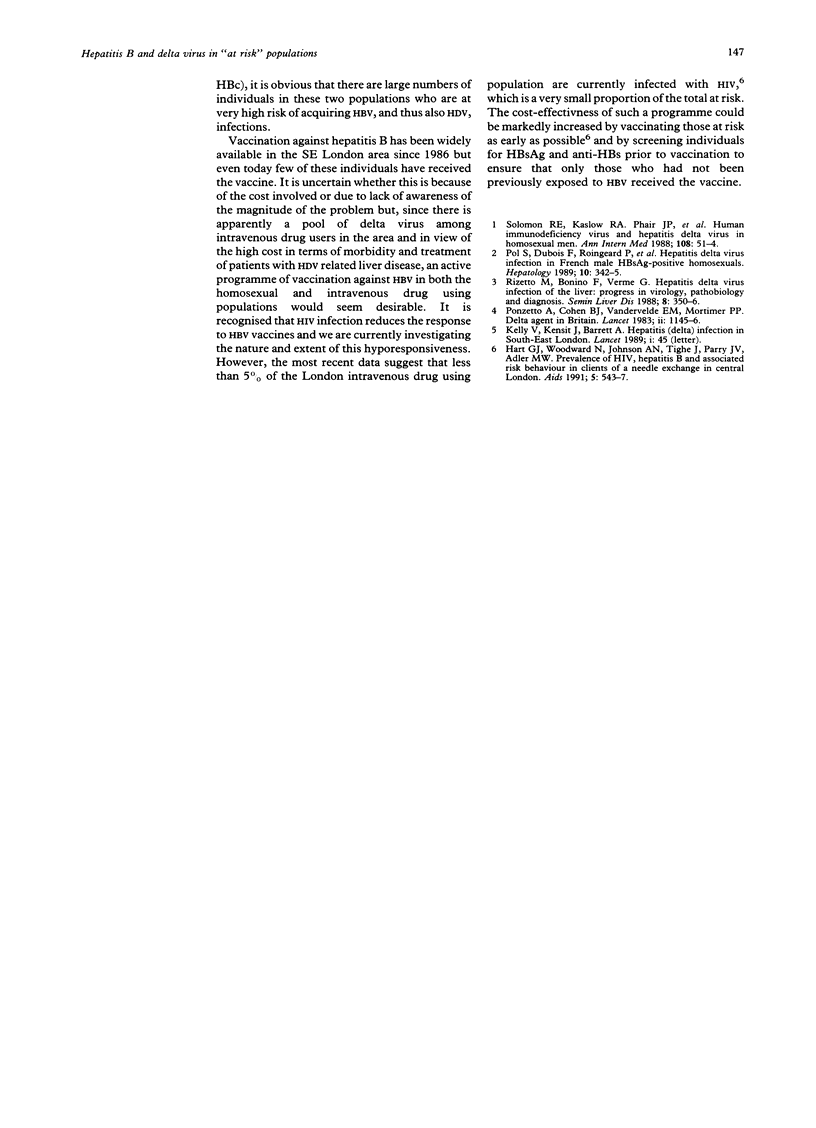Abstract
STUDY OBJECTIVE--The hepatitis delta virus (HDV) contributes significantly to the morbidity and mortality of hepatitis B virus (HBV) infection, which is particularly prevalent among intravenous drug users and male homosexuals. A recent report has indicated that HDV first appeared in the South East London intravenous drug using population in 1982. The aim of the present study was to assess the prevalence of HDV in these two groups at risk of HBV infection in South East London. DESIGN--The study was a cohort analysis of HBV and delta virus serum markers, stratified temporally and with respect to intravenous drug use and sexual practice. SETTING--This was a population study of 372 consecutive intravenous drug users attending a local drug rehabilitation centre and 1481 subjects seen at a sexually transmitted disease clinic in the same area, during the years 1979 to 1988. MEASUREMENTS AND MAIN RESULTS--Of 372 intravenous drug users, 195 (52.4%) had evidence of current or past infection with HBV, of whom 17 had chronic HBV infection--a carriage rate of 8.7%. Twelve (70.6%) of these 17 also had chronic HDV infection--the first cases being identified in 1984. By comparison, 406 (27.4%) of the sexually transmitted disease clinic patients had been been exposed to HBV, 32 having chronic HBV--a carriage rate of 7.9% (7.5% v 9.4% among male homosexuals v male heterosexuals). Ten had been exposed to HDV (the first case in 1980) but only two (who did not admit to intravenous drug use) had chronic HDV infections (p less than 0.0005 v the rehabilitation centre patients). CONCLUSIONS--Although the HBV carriage rate is very similar in these two populations, chronic HDV infections were mainly confined to intravenous drug users. However, reports from the USA and France indicate spread of delta virus to the male homosexual community and, since there is clearly a pool of HDV in SE London, vaccination against HBV in these risk groups in likely to be cost-effective and should be actively encouraged.
Full text
PDF



Selected References
These references are in PubMed. This may not be the complete list of references from this article.
- Breast cancer and oral contraceptives. Lancet. 1983 Nov 12;2(8359):1145–1146. [PubMed] [Google Scholar]
- Hart G. J., Woodward N., Johnson A. M., Tighe J., Parry J. V., Adler M. W. Prevalence of HIV, hepatitis B and associated risk behaviours in clients of a needle-exchange in central London. AIDS. 1991 May;5(5):543–547. doi: 10.1097/00002030-199105000-00010. [DOI] [PubMed] [Google Scholar]
- Kelly V., Kensit J., Barrett A. Hepatitis D (delta) infection in south-east London. Lancet. 1989 Jan 7;1(8628):45–45. doi: 10.1016/s0140-6736(89)91701-7. [DOI] [PubMed] [Google Scholar]
- Pol S., Dubois F., Roingeard P., Zignego L., Housset C., Brechot C., Goudeau A., Berthelot P. Hepatitis delta virus infection in French male HBsAg-positive homosexuals. Hepatology. 1989 Sep;10(3):342–345. doi: 10.1002/hep.1840100316. [DOI] [PubMed] [Google Scholar]
- Rizzetto M., Bonino F., Verme G. Hepatitis delta virus infection of the liver: progress in virology, pathobiology, and diagnosis. Semin Liver Dis. 1988 Nov;8(4):350–356. doi: 10.1055/s-2008-1040556. [DOI] [PubMed] [Google Scholar]
- Solomon R. E., Kaslow R. A., Phair J. P., Lyter D., Visscher B., Lyman D., VanRaden M. T., Gerin J. Human immunodeficiency virus and hepatitis delta virus in homosexual men. A study of four cohorts. Ann Intern Med. 1988 Jan;108(1):51–54. doi: 10.7326/0003-4819-108-1-51. [DOI] [PubMed] [Google Scholar]


